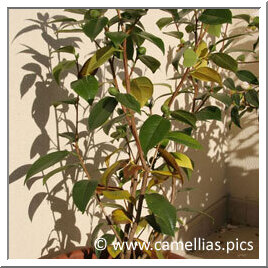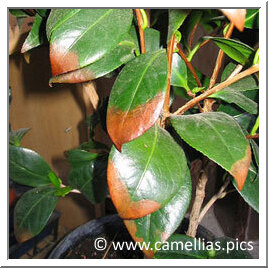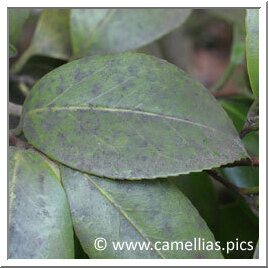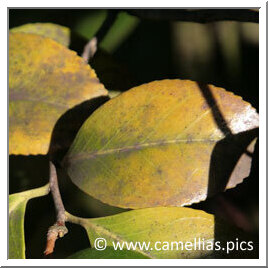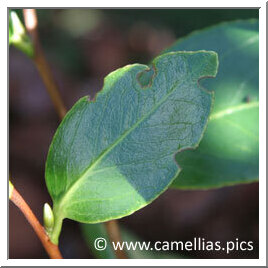Camellia diseases
Contrary to what is often thought, camellia is a robust and easy to grow plant. However, it may know some disorders.
Here is a brief statement of most commonly encountered diseases.
The fall of the flower buds
The buds are a sign of good health. If their growth is regular from one flowering to another, everything is normal.The more a camellia grows, the more it flourishes. If the growth of the buds is abnormally slow or if they end up falling, you must seek for the cause.
The camellia can be lacking of sunlight (a camellia must have a minimum of sun to bloom, quantity to adjust depending on the region and the species or variety).
It may also be "hungry" because of a lack of fertilizer or a poor substrate. The fertilizer has to be given in the spring. I complete the peaty soil in spring and late summer. I repot the camellias in pots in spring.
A camellia needs water. If the water supply throughout the summer months is not enough, the buds will struggle to grow and are likely to fall. The quality of the flowers will also be compromised. If a winter or spring flowering camellia has its flowers fall, it means that it ran out of water during the spring or preceding summer. Pay attention to the thermal shock, which often occurs in summer. You forget the camellia and the soil dries, then you hasten to water and you see the buttons fall. You must leave a sprinkler (a cone and a bottle will do the trick) and especially water gradually during drought. You will probably lose some leaves, but future flowering will not be totally compromised.
If the buds fall occurs in winter, the camellia is probably exposed to a morning sun. Their is nothing worse than the sudden transition from freezing to thawing for buds. A morning sun after frost can ruin the coming flowers. In this case, you must review the exposure.
Drought and excessive watering
Both are as bad as one another. Drought can cause leaf and buds fall. This will be mulching the base of camellias, whether in ground or in containers. You must monitor the watering, the soil should always be moist but not too much. In summer, warm evenings, give the camellia a shower. They love humid climates. Just wait until their are no longer exposed to the sun, so as not to burn.
Falling leaves
We have just mentioned in the preceding paragraph. Drought and excessive watering are responsible. The use of a winter veil can have the same consequences. The camellia is much cold hardy than we think. Frost is not necessarily a problem. Everything depends on its duration and intensity. We discussed this in detail in the Camellia care page.
Poor absorption of fertilizers or inappropriate fertilizers
Excessive sun
Either the leaves turn brown, either they fade and turn yellow. Therefore, avoid too hot exposure, especially along a wall exposed to full sun. The only solution is to find a more sheltered place.
Sooty mould fungus
Chlorosis
Vine Weevils
To summarize: watch regular watering, the leaf color and buds condition. An healthy growing camellia produces buds and keeps a bright and colorful foliage.






